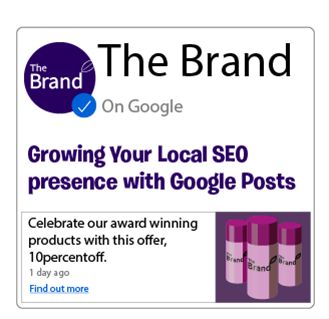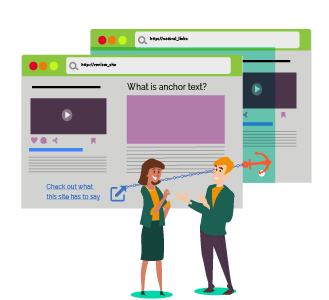Have you heard of Google Posts (also known officially as Posts for Google)? It’s not surprising if you haven’t.
That’s because Google Posts is one of the more interesting, but yet under-the-radar product rolled out by Google in recent memory.
Google Posts first surfaced back in January 2016. It was initially a tool used by US presidential candidates. It was a medium to allow campaign teams of both Trump and Hilary to submit opinion pieces to increase their respective candidate’s SERPs (search engine ranking positions).
Even though it looked like a social media platform, there was no networking aspect within Google Posts.
Users couldn’t like, comment or share posts, and these features were then added in later when Google realised its potential.
Since then, the use of Google Posts has expanded to local organizations and business. Eventually, Google Posts opened up to many other public figures, celebrities, and even sports athletes.
Today, Google Posts is part of Google My Business tools suite. It allows businesses to carry out audience outreach such as sharing specials or current promotions, showcasing top products, product announcements, promoting business events and more.
The primary objective of these posts is to help local businesses connect with customers in the area. Google Posts is highly beneficial if you are looking to grow your local SEO reach.
If a Google user looks up a business directly online, the Google Post will show up in the same space as the contact and location information on Google My Business listing.
It’s also good to know that using Google Posts is free of charge. On top of that, the tool is very straightforward to manage on Google My Business. So there really isn’t any reason to not dip your toes into Google Posts.
Local Business SEO and Google Posts
A significant part of growing your local business SEO presence is to share relevant content and information about your local business.
When you do this, it will help make your Google local listing appear more relevant and active. This ‘relevance’ factor will then engage Google users in a more profound way than what was previously available.
In the past, a visitor from Google Maps would see a chunk of general metadata about your local business like operating hours, reviews, address, phone number, etc.
Through the sharing of info and content about your local business (including your products and services), you are telling Google to build more “location rich” metadata into your business listing on Google.
When it comes to local SEO, this means you are building more location authority within your city or town than competitors that aren’t putting in the effort.
And with local SEO, the stronger your location authority, the more presence you’ll command in the local search results, which will subsequently lead to more conversion through Google searches, and ultimately more profits for your bottom line.
So how does local SEO relate to Google Posts?
With Google Posts, you can take the level of user interaction further with news, information, videos, and photos that relate to your local business.
When you share posts on Google Posts, they will show up in the local search results or Google Maps search results as updates that visitors can click on and read about.
Adding new posts to your Google Posts is an easy and efficient way for any local business to create new, locally relevant content and publish it directly to your Google My Business listing.
Whenever you create a new post, you can add location contexts such as by including relevant information, tags, and keyword phrases.
And since Google Posts is an offering that is direct from Google itself, all your new content being published directly on your listing will have an immediate impact towards building your location authority, then your efforts outside of the Google ecosystem.
Being active on Google Posts can help your local business get found on Google through related searches that happen every day as people in your town or city search for your type of business, products, and services in local context.
This article will show you some of the strategies to adopt when you are using Google Posts.
1. Use Attractive Images
Just like marketing on any social media platform, a large of success depends on the use of captivating images to capture your audience’s attention.
When it comes to using Google Posts to showcase a product or even an individual, the use of a high-quality image or photo is a must.
Every platform has their own designated image dimensions, and Google Posts is no exception. The ideal image size is 750px x 750px, in either a JPG or PNG format.
In fact, if you upload an image smaller than 720px x 540px, Google won’t be accepted.
Depending on the type of business or the products you are offering, it could be wise to invest heavily in this aspect.
For instance, if you’re in the fashion, clothing or food business, having a collection of high-quality close-up photos will be more impactful in grabbing people’s attention.
2. Write Actionable Headlines
When it comes to headlines, the more powerful they are, the bigger the impact they have on your marketing efforts, period.
Whether you are writing them for social media posts, emails, blog articles, or any other form of written content, the headline is going to be the first few words that introduce and attracts the readers to what you are offering.
Headlines provide a viable proposition for your audience to want to check out the rest of your content.
Even with the most fascinating content, but without a compelling headline, nobody is going to bother with what you have to offer.
That is why when it comes to Google Posts, a compelling headline is just as (if not more) crucial as a high-quality image.
Your headlines also play a crucial role in your SERPs, as it is the first place people scan through when they are seeking information on your business.
As everybody else’s headlines and titles are also vying for the audience’s attention, your headlines need to:
- Tell users what you are offering
- Tell users why people should care
- Stay concise due to the character limits.
For example, let’s say you operate a bakery. Your headline reads: “FREE Samples this Sunday from 12-2pm!”
Within a short headline, you have successfully conveyed your offer to readers, and by placing emphasis on the word ‘free,’ it gives them a compelling reason to care.
Depending on the type of product or service you are selling, coming up with compelling headlines on your own can be tough.
Try to write down around 10 to 15 headline variations. You are more likely to hit on a winning headline if you take the time to brainstorm on different varieties.
3. Write Short Yet Informative Descriptions
Just like your headlines, you only have a limited number of characters to work with.
In fact, you’ll only have around 80 characters to write your description. That includes your headlines as well. While you can most certainly exceed and write more than 80 characters, but only the first 80 will be visible to users on Google.
Needless to say, you need to entice potential leads within a short limit. You’ll only have a sentence or two to make audiences want to click and learn more about what you have to offer.
That means your writing style not only needs to be succinct, but highly SEO-driven as well.
Still, if you find it too challenging to keep it under 80 characters, it’s generally best to have your full descriptions be around 150-300 characters.
But keep in mind that you should convey as much key information as possible about your offer within the first 80 characters.
4. Have Clear CTAs (Calls-to-Action)
CTA buttons are some of the most highly-experimented elements in the digital marketing world.
Large companies and corporations spend thousands of dollars or more split testing and experimenting on CTAs to find the one that converts best for their business.
That’s because the CTA is the bridge that closes the gap between a lead to a conversion. If your goal is to convert a prospect to a buyer, that means it’s the bridge for a prospect to cross to become a full-fledged buyer.
Whether it’s within your headline, below your description, or anywhere in between, the CTA can make or break your Google Post.
When you’re using Google Posts, you have to make your CTAs count since they are the cornerstones of your content. Keep things short and sweet, such as:
“Find Out More”
“Order Now”
“Get Your Copy”
Always avoid overly promotional jargon or ambiguous words, They are usually too confusing to a lot of people, and can also be a turnoff for people who hate getting pitched.
5. Track Your Clicks
Being a Google product, you can track user behaviour on Google Posts using the handy and powerful Google Analytics.
On the backend of Google Posts, simply add your CTA button’s URL into Google Analytics to start gathering data on your users after they engage with your content on Google Posts.
Right now, there isn’t a complete integration of both products so it can be challenging to gather insights that go beyond just views and clicks on the Google My Business dashboard.
So you’ll need to create your own UTM codes, by relying on yet another tool from Google: Google’s Campaign URL Builder.
These UTM codes will allow you to track the engagement/success of your Google Post.
Under the Google Campaign URL builder, in the first two boxes you will want to enter the address that you want the CTA to link to, then set the Campaign Source to “google_posts.”
If the end goal is for the post to appear on SERPs naturally, then you should set the Campaign Medium to “Organic.”
Once the set up is properly done, you can then get a more comprehensive view of the users who have clicked on the post and see if they are actually converted onto your website.
6. Maintain a Consistent Schedule
Google Posts only stay up for around a week or so. After about a week, Google will send you a notification before it expires and gets taken down.
That means you can’t just produce one or two posts and let it sit there forever.
To make Google Posts to work in your favour regarding SEO, you’ll need to have fresh content ready and consistently posted.
This is where a schedule for the type of content to publish, and how often will come in handy.
If you are promoting events around the whole year, this wouldn’t be too much of an issue as you’ll always have content to post about.
But if you are using Google Posts to promote products or services, then it will be slightly more difficult to find content. So it will be a wise choice to set your Google Post content schedule to ensure there is always fresh content constantly on display.
Just as you would set up any kind of content to publish on your calendar, always make sure you have a constant schedule for setting up Google Posts so you won’t end up with anything to display for your users, and losing potential leads.
Conclusion
Right now, joining Google Posts is still very much a new endeavour, and if you do it now, you are currently still considered an early adopter. That means you can take advantage of all the perks before they potentially disappear in the future.
And much like social media and content marketing, a major aspect of the Google Post formula comes down to SEO-friendly writing.
Otherwise, if you’re still unsure if Google Posts is worth your time and energy, look at some of the ways to create educational content.
Learn how to write in a concise, attention-grabbing way that compels readers to click. The key objective of these posts is to provide users with relevant information and ultimately drive your local SEO efforts to improve your SERPs.
Keep in mind, success on Google Posts will most certainly require some trial and error of varying degrees. Make sure you have set up backend analytics tracking to provide the insight you need.







